Delhi – Agra – Gwalior – Orchha – Khajuraho is the hottest heritage circuit in the country. Starting with the Kosi Minars, mile stones from the Mughal era, along the NH2 as you exit Delhi, the best way to do it is from the highway. I drove till Orchha in October this year and rediscovered Dholpur, mid way between Agra and Gwalior, which doesn’t figure in the circuit. This quaint little town is given a miss by most in their hurry to get to the more famous Gwalior, missing in the bargain quite a few historic monuments and the fascinating yarns spun around them.
Agra doesn’t want you to leave; it encourages bovine squatting and vegetable vending right on your path. Honking doesn’t help, you have to wait till the holy cow sniffs the rotis proffered by the woman in the sari (is it fresh?), takes a hesitant nibble (too much ghee?), before smacking it all in. Even then it doesn’t budge (try the other lane, chum!). Then all this bucolic mayhem offsetting the dignified and well-kept Fatehabad road – where all the better hotels in Agra are – you just exited is a fitting prelude to the solemn if not sombre drive ahead.
The 130 km drive along the NH3 to Gwalior through is through the historic Bundelkhand region; a distinctly backward region in central India where politicians hesitantly amble into promising progress every five years. The burden of this region has been now divided between Uttar Pradesh and Madhya Pradesh, the latter bearing most of it. Like many regions finding mention in the historic and mythological texts, the Bundelkhand too was once thick forest with lots of watering holes and wild animals. Today it is mostly deciduous vegetation, scattered over arid hills and expansive plains. Some very vistas are thrown your way as the region straddles the Indo-Gangetic plains to the north and the Vindhya mountains to the south. Remnants of old forts and other strongholds can still be seen holding high a proud head atop boulder-strewn hills. Trees are rare here, rising up like afterthoughts. Dholpur is midway and is reached in a little over an hour from Agra; do not take the flyover from Rajakhera town which takes you over and across Dholpur town.
The legend of the Dholpur stone
‘Dholpur stone’ has come to be synonymous with red sandstone, a ride around Dholpur town will tell you why. Many historic buildings which are now converted to the municipality office, the public library and other common amenities are all made of this red sandstone. Dholpur stones have gone into making not just the local structures, but also faraway ones in Delhi such as the Rashtrapati Bhawan, Red Fort and Humayun’s Tomb. Most of it is actually mined from nearby Bari; as most of the workers in the quarrying sites were from Dholpur it came to be known as ‘Dholpur stone.’
The Raj Niwas Palace
The signage is more a wink than an announcement; it is by the bend of the road and unless you are on the lookout for it you will miss it. The iron gate seemingly opens to nowhere as the driveway goes on forever. But once you enter the premise, you know this is luxury reborn. The Raj Niwas, built to welcome HRH Albert Edward when he visited in 1876, is a high-end heritage hotel today. Wonderfully preserved, the property proudly flaunts the native stone on the outside – the bland redness adds to your surprise at the sheer opulence inside. Located amidst 13 acres of verdant luxury and being next door to the Chambal Sanctuary sees to it that peacocks and other dainty creatures hop by for a quick visit. No, you cannot just decide to eat here – reservations have to be made through their Delhi office. I had to be content with a bottle of ice cold water.
National Chambal Sanctuary
This is a must-visit especially if you have given up on the conditions of rivers in India; the Chambal is among the cleanest rivers of the country. Must be the reputation of the region that precedes it – the numerous ravines surrounding the river once made it the preferred hideout for notorious dacoits like Phoolan Devi and Mann Singh. A boat ride along the river will not only bring you up and close to the areas once terrorised by these feared bandits but also to the endangered Gangetic river dolphins and gharials. The sanctuary itself is a 400 km protected stretch of the river and rides lasting up to four hours are available.
The Machkund Temple
Proceeding towards the NH3 towards Gwalior, there is an expansive junction. Take a right here along a more or less deserted stretch, with an occasional tractor ploughing by. The four kilometres is very scenic – you have the Aravali mountain range serenading you on the left and vast viridian tracts of agricultural land on the right. You can drive all the way up the cobbled mesa which is the Machkund Temple complex. This temple finds mention in the Puranas and is believed to have been built by Raja Machkund of the Suryavanshi dynasty. Surrounding the ‘kund’ or pond are structures housing different deities. Tourists – if any – are few, the blanketing quiet is broken only by simian squabbles. Legend goes that Raja Machkund, who ruled 19 generations before Lord Rama, was taking a siesta here. Hearing a commotion and he woke up to find a demon chasing Lord Krishna. The Raja immediately annihilated the demon to ashes – an episode venerated by the pilgrims through pujas and prayers.
Other attractions around Dholpur
Van Vihar and Ram Sagar Wildlife Sanctuaries: The Van Vihar Wildlife Sanctuary is 20km from Dholpur town and is spread over 59 sq.km. It is divided into two – the Van Vihar itself which is situated on the Vindhyan Plateau and the Ram Sagar Sanctuary by the Ram Sagar Lake. Both the sanctuaries are home to exotic flora and fauna including sambhar, chital, nilgai and even an occasional leopard. Besides spotting rare migratory birds, you can also go for a spot of angling in the Ram Sagar Lake during season.
Shergarh Fort: Very near to Dholpur town, this sprawling defence tower was built by Sher Shah Suri, the sultan of Delhi against the marauding rulers of Mewars during the 16th century. Some beautiful Hindu and Jain motifs still line the walls of the Fort.
Talaab Shahi: This is a hunting lodge built by Shah Jahan in 1617 AD. The remains are still majestic against a picturesque lake and is a sort of temporary abode to migratory birds like tufted ducks, teals, wigeons and red-crested pochards.
The Humayun Nama recounts Babur coming to Dholpur with his queens and concubines to get over the death of his son Anwar; a kind of ‘rebound holiday’ as we know it. Some of the soothing, invigorating idyllic charm which calmed the Mughal can be still found here. Only if you give it at least a day.


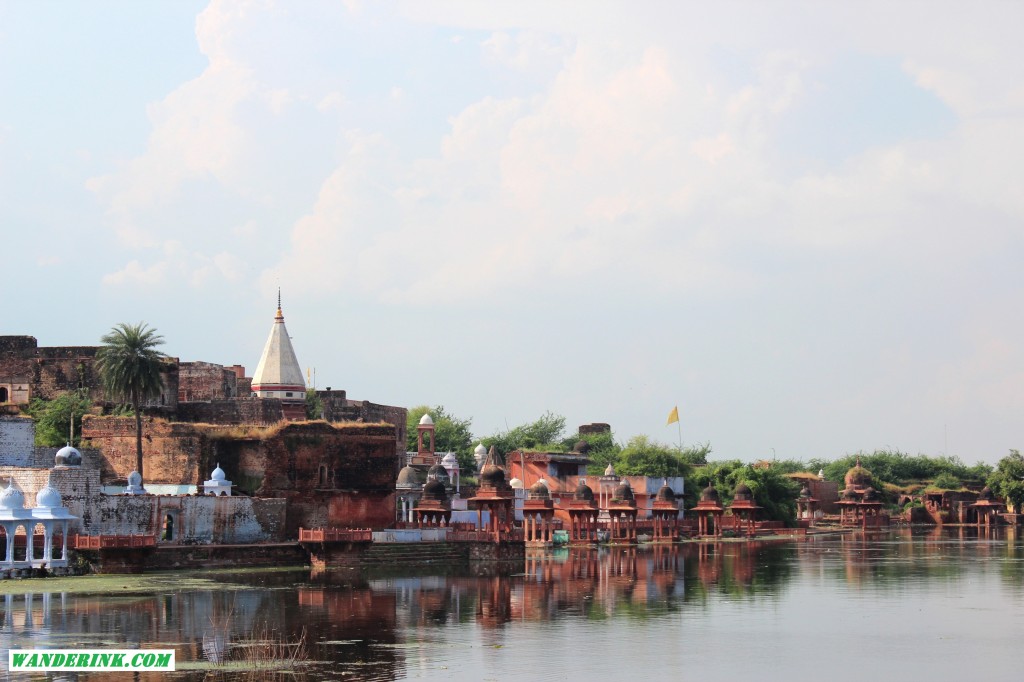
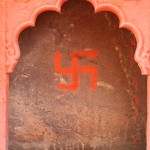
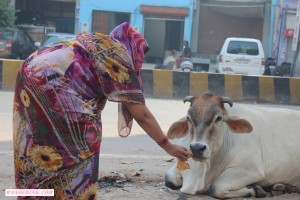
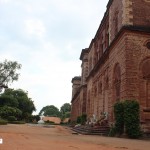
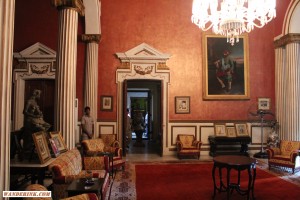
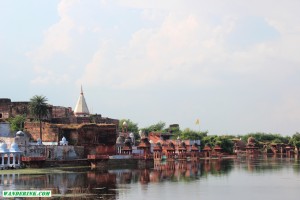









Good reading, quite informative as well.
Heard of Dholpur stone, but never thought of going there. Your post has given me enough reasons to visit this town, next time north India beckons me.
Do not miss the Machkund Temple, around 5 – 6 km away. The drive too is scenic.